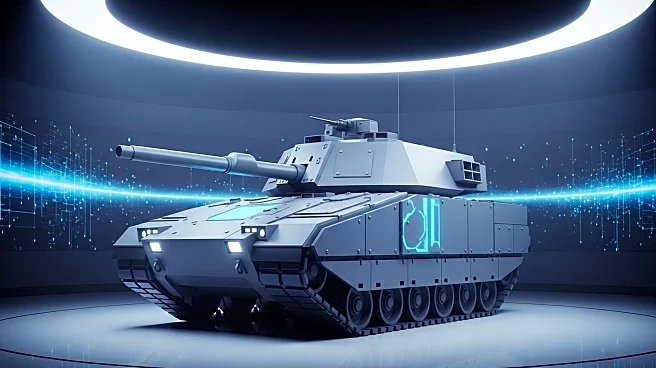What's Happening?
L3Harris Technologies has introduced its Distributed Spectrum Collaboration and Operations (DiSCO) architecture aboard the Shadow Fox unmanned surface vehicle (USV). This system was showcased at the Defence and Security Equipment International (DSEI) 2025 exhibition in London. DiSCO integrates communication and radar data into a near-realtime common operating picture, enhancing intelligence, surveillance, and reconnaissance (ISR) capabilities. The software is designed to manage the electromagnetic spectrum efficiently, providing critical information to commanders in congested or contested environments. It aims to reduce bandwidth demands while ensuring timely and informed decision-making. The Shadow Fox USV, introduced in 2018, can reach speeds over 40 knots and is part of L3Harris' efforts to address the challenges of modern battlespaces.
Why It's Important?
The introduction of DiSCO represents a significant advancement in military communication technology, particularly in managing the electromagnetic spectrum. This development is crucial for enhancing situational awareness and decision-making in complex environments. By providing a scalable and software-defined ecosystem, DiSCO can improve the efficiency of military operations, potentially giving the U.S. and its allies a strategic advantage. The ability to maintain communication and operational capabilities in contested environments is vital for national security and defense strategies, especially in regions with increasing geopolitical tensions.
What's Next?
The deployment of DiSCO could lead to further integration of advanced communication systems in military operations. As the technology is tested and refined, it may be adopted more widely across different platforms and branches of the military. This could prompt other defense contractors to develop similar technologies, potentially leading to innovations in military communication and ISR capabilities. The success of DiSCO could also influence future military procurement and strategy decisions, emphasizing the importance of advanced communication systems in modern warfare.











